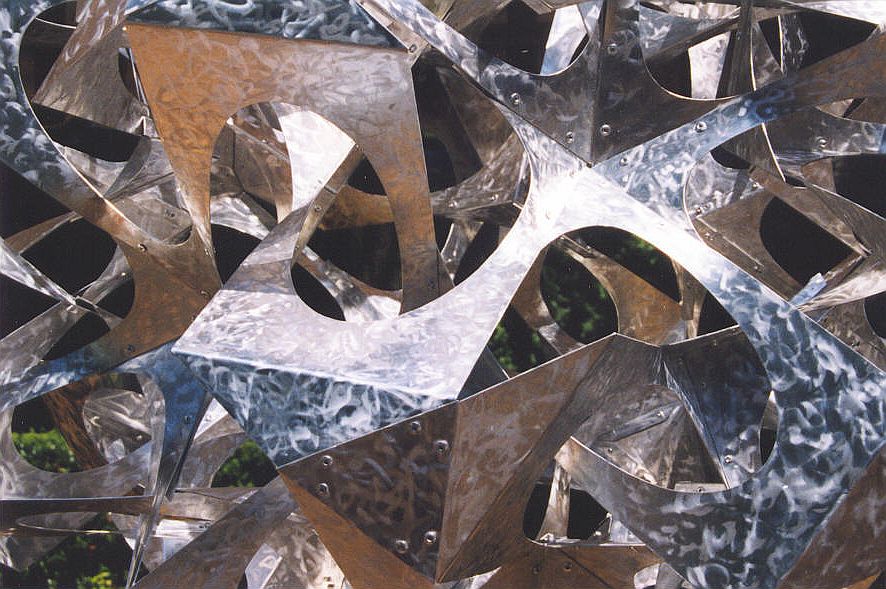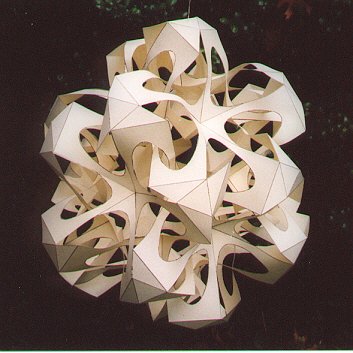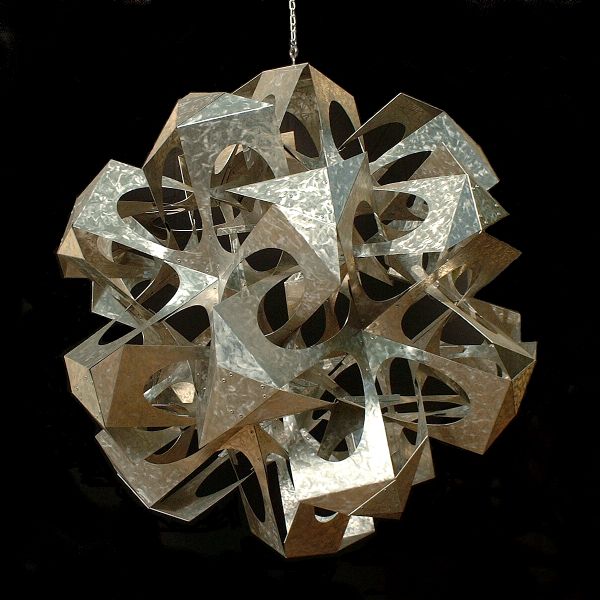Whoville
George W. Hart

For those who want to know the geometric details, the form derives from an icosahedron and dodecahedron in mutually dual position, which would lie in the empty central region of the sculpture. The five-fold dimples correspond to the vertices of the icosahedron and the three-fold dimples (in the “basements” of the three-sided buildings) correspond to the vertices of the dodecahedron. The lines of the sculpture extend or parallel the edges of these polyhedra. The rectangular form of each doorway was chosen to be a golden rectangle and the triangles chosen to create parallel planes.

As is often the case, I found that making paper models was a good
method
for working out some of the details of construction and determining the
exact shape I wanted for the curve.
copyright 1999, George W. Hart
